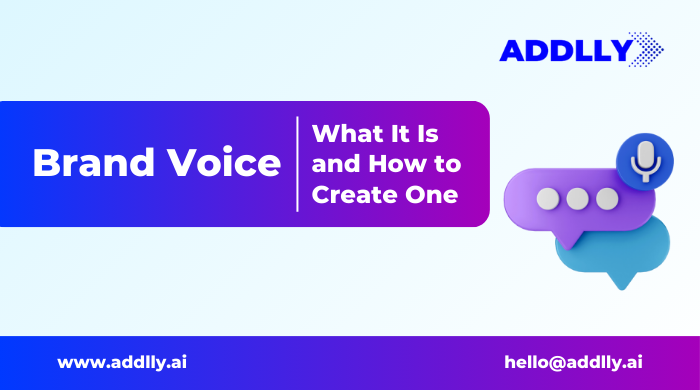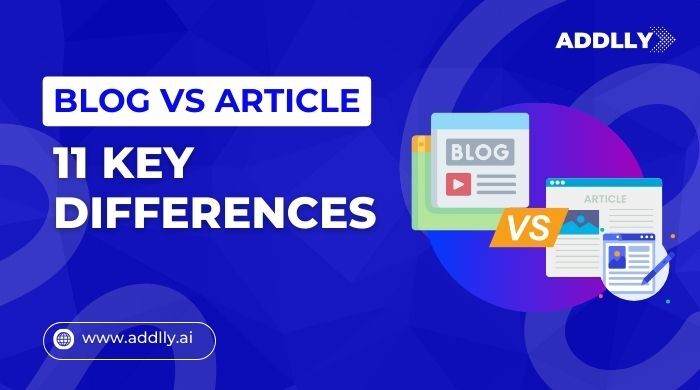Crafting a brand voice is more than just creating catchy phrases. It’s about understanding your brand’s unique qualities and what resonates with your audience. A compelling brand voice isn’t just a communication tool—it’s the essence of your brand, reflecting its personality, values, and mission. When done right, it can make your brand feel like a trusted friend or an inspiring leader.
In this article, we’ll explore the power of brand voice in content marketing. We’ll discuss its importance and how you can use it to make your content and marketing copy more effective. Understanding brand voice is crucial for creating impactful content, whether you’re writing blog posts, social media updates, or other types of content writing. We’ll show you how to develop a voice that truly represents your brand and connects with your audience.
By the end, you’ll have a clearer picture of how to use brand voice to enhance your content marketing strategy and make your brand stand out in a crowded marketplace.
Key Takeaways
- Brand voice is your personality in words. It’s the consistent tone, style, and language you use to connect with your audience. It reflects your brand’s identity, values, and mission.
- A strong brand voice cuts through the content noise. It makes your content memorable and helps you build brand recognition.
- To develop your brand voice, look to your brand’s core values and target audience to define your unique voice. Analyze successful brands for inspiration but remember to adapt it to your own identity.
Quick Summary Powered by Addlly AI
ToggleWhat Is a Brand Voice
A brand voice is the unique personality and tone that a business adopts in its communication with its target audience.
It encompasses the language, style, and values that a brand consistently projects across all its marketing channels, including website content, social media posts, advertising campaigns, and customer interactions.
A well-defined brand voice helps businesses establish a distinct identity, connect with their audience on a deeper level, and differentiate themselves from competitors.
How to Create a Strong Brand Voice in 10 Steps

Crafting a strong brand voice is essential for standing out in today’s crowded market. Your brand voice is the unique personality and style that sets your business apart, allowing you to connect with your audience on a deeper level. A consistent and well-defined brand voice not only builds trust and loyalty but also makes your content more memorable and engaging. Ready to transform your brand’s communication?
Here are six steps to create a strong brand voice that resonates and leaves a lasting impression.
1. Understand Your Brand’s Personality
Identifying your brand’s personality is the crucial first step in creating a unique brand voice that resonates with your target audience. Your brand’s personality encompasses the characteristics, values, and traits that define its identity and shape its communication style. By understanding and defining your brand’s personality, you can create a consistent and authentic brand voice that sets you apart from your competitors. Start by asking yourself questions such as:
- What are the core values that drive your brand?
- What is your brand’s mission and purpose?
- Who is your target audience and what are their preferences and communication styles?
By answering these questions, you can begin to develop a clear picture of your brand’s personality and how it should be reflected in your brand voice.
2. Know Your Audience
Understanding your target audience is a crucial step in creating a brand voice that effectively connects with and resonates with them. By gaining insights into their demographics, psychographics, and communication preferences, you can tailor your brand voice to meet their expectations and forge a deeper connection.
Utilize tools like surveys, focus groups, and social media analytics to gather data and feedback directly from your target audience.
3. Maintain Consistency
Consistency in brand voice is a powerful tool that can significantly impact brand recognition and trust. When a brand maintains a consistent voice across all its communication channels, it creates a cohesive and unified brand experience that resonates with customers. According to a report by Lucidpress, consistent brand presentation across all platforms can increase revenue by up to 23%.
To maintain consistency in brand voice, it is essential to establish clear brand guidelines and provide training to employees and stakeholders. These guidelines should outline the preferred language, tone, and style of communication that align with the brand’s personality and values.
4. Embrace Storytelling
Embracing storytelling as part of your brand voice is a powerful way to engage your audience, create emotional connections, and differentiate your brand from competitors. Stories have the ability to captivate and inspire, leaving a lasting impact on your audience.
Consider the unique aspects of your brand, such as its origins, challenges overcome, or customer success stories. These stories can be used to humanize your brand, showcase its authenticity, and create a deeper connection with your audience.
5. Regularly Evaluate and Refine
As platforms and audience preferences evolve, it’s important to regularly evaluate and refine your brand voice for each platform. Stay updated on platform trends, user behavior, and feedback to ensure that your brand voice remains relevant and resonates with your audience.
Continuously monitor engagement metrics, social listening, and audience feedback to gather insights and make informed adjustments to your brand voice. This ongoing evaluation and refinement process will help you stay ahead of the curve and maintain a strong connection with your audience on each platform.
6. Integrate Your Brand Voice Across All Content
Every piece of content you create should reflect your brand voice. This consistency in tone matters and helps to reinforce your brand identity and build a connection with your audience. Consistency is the secret ingredient to making customers happy across their entire journey with you.
7. Train Your Team
Your marketing team should be well-versed in your brand guidelines to ensure consistency across all content. Regular training sessions can help keep your team updated and aligned with your brand voice. The most successful organizations and well known brands have a well-documented content strategy, which includes branding guidelines.
8. Align Your Brand Voice with Visual Identity
Your brand voice should be in an appropriate language to complement and enhance your visual identity. The words you use to define brand voice should match the feel of your visuals, creating a cohesive brand experience.
Consider including examples and visual references to demonstrate how the brand should be presented across different platforms and mediums. This helps to ensure that the visual identity aligns with the desired brand voice and maintains consistency.
9. Brand Voice and Customer Service
Brand voice customization shouldn’t stop at your marketing materials and content. It should extend to customer service interactions as well. Whether it’s a support email or a social media response, each communication should echo your current brand voice tone.
Microsoft’s State of Global Customer Service report revealed that 96% of customers worldwide view customer service as an important factor in their choice of loyalty to a brand. When customers trust a brand, they are more likely to develop long-term relationships, make repeat purchases, and recommend the brand to others.
10. Adjust Your Brand Voice for Different Platforms
To effectively reach and engage your audience, it’s crucial to adjust your brand voice for different platforms. Each platform has its own unique characteristics, audience expectations, and communication norms. Adapting your brand voice to fit these platforms ensures that your messaging is relevant, relatable, and effective.
For instance, the tone of your LinkedIn content might be more formal compared to Instagram. Content format preferences vary significantly between platforms, highlighting the need for platform-specific brand tone adaptation.
Recommend reads:
The Power of a Strong Brand Voice and Why it Matters

A strong brand voice is crucial for businesses in today’s competitive marketplace, allowing them to establish a memorable and recognizable presence. Consistent brand presentation across different channels can increase revenue by up to 23%, making it easier for customers to identify and relate to the brand. A well-crafted brand voice builds trust and loyalty with the audience, attracting new customers who resonate with the brand’s values and personality. It creates a cohesive and unified brand experience, enhancing the overall perception and reinforcing credibility.
When customers encounter consistent messaging and tone across various touchpoints, it ensures the brand stays top of mind and its messages are easily understood and remembered. Discover how mastering your brand voice can transform your business and connect you more deeply with your audience.
1. Aligning brand voice with target audience
One of the key considerations when developing a brand voice is aligning it with the preferences and expectations of the target audience. By understanding the demographics, values, and communication styles of their target market, businesses can tailor their brand voice to resonate with their audience effectively.
For example, a brand targeting millennials may adopt a more casual and conversational tone, using slang and pop culture references, while a brand targeting professionals may opt for a more formal and authoritative tone. This alignment helps businesses establish a connection with their audience, making them feel understood and valued.
2. Building brand consistency and recognition
Consistency is vital when it comes to brand voice. Businesses should strive to maintain a consistent tone, language, and style across all their communication channels. This consistency helps build brand recognition, making it easier for customers to identify and remember the brand.
Moreover, a consistent brand voice also builds trust and credibility. When customers encounter a consistent brand experience, it reinforces the brand’s authenticity and reliability. It shows that the brand is committed to its values and promises, making customers more likely to trust and engage with the business.
3. Adapting the brand voice to different channels
While consistency is essential, it’s also important to adapt the brand voice to different channels and formats. Each platform may have its own unique characteristics and audience expectations, requiring businesses to tailor their messaging accordingly.
For instance, the brand voice on social media platforms like Instagram and Twitter may be more concise, informal, and engaging, while the brand voice in a formal email newsletter or a white paper may be more professional and informative. Adapting the brand voice to different channels ensures that the messaging is appropriate and effective in each context, maximizing its impact.
4. Enhancing Customer Loyalty
A consistent, relatable brand voice can also enhance customer loyalty. When customers feel connected to a brand’s voice, they are more likely to stay loyal and recommend the same brand name to others. Users feel more loyal to brands that they can connect with on a personal level.
5. Driving Engagement
Engaging content is often marked by a strong, unique brand voice. By infusing your content and social posts with your brand’s strong voice throughout, you can drive more engagement, from likes and shares to comments and conversions. Content that evokes strong positive or surprise emotions is most likely to be shared, emphasizing the importance of a distinct and powerful brand voice in driving engagement.
Addlly AI Can Help Ensure Your Brand Voice Remains Consistent

Addlly AI offers a suite of advanced AI writing tools designed to help maintain a consistent brand voice across various platforms and content types. Here’s how Addlly AI can assist in ensuring your brand voice remains consistent:
- SEO Optimization: Addlly AI’s tools are designed to create content that ranks well on search engines, ensuring that your brand’s voice is not only consistent but also optimized for visibility and engagement.
- Brand Voice Adaptation: Our platform can adapt and maintain your brand’s unique tone across different content types, such as blogs, social media posts, and ad copies. This ensures that your brand’s personality and values are consistently communicated, regardless of the medium.
- Real-Time Data Integration: By providing up-to-date content, Addlly AI helps you stay ahead of competitors and trends, ensuring that your brand voice remains relevant and engaging.
- Multiple AI Models: Utilizing various AI models allows for the best results by combining the strengths of different AI sources. This approach ensures a more nuanced and accurate representation of your brand’s voice.
- Tools for Different Content Types: Addlly AI includes specific tools for creating SEO-friendly blogs, generating detailed content with keyword research, crafting social media posts with real-time trends, and developing effective Google Ad copy. These tools cater to different content needs while maintaining brand consistency.
Recommend tools:
Examples of Brand Voice Across Industries

Brand voice can vary greatly depending on the industry and target audience. Here are some examples to showcase this range, complete with real-world examples from each brand’s communication:
Nike
Nike’s brand voice is all about confident encouragement. Their tagline, “Just Do It,” perfectly encapsulates this. They use short, powerful statements and visuals featuring athletes pushing their limits to inspire people to achieve their fitness goals. For instance, a recent Nike ad campaign featured the tagline “Because girls can do anything” alongside images of female athletes dominating their sports.
Dove
Dove’s brand voice is friendly, uplifting, and uses affirmative language. They focus on promoting self-esteem and body positivity. An example of this can be seen on their social media channels, where they feature real women of all shapes and sizes alongside messages like “You are beautiful.”
Duolingo
Duolingo’s brand voice is known for being quirky and humorous. They use memes, pop culture references, and even their mascot, the green owl Duo, to make language learning fun and engaging. Their social media posts often feature funny takes on language learning struggles, like “Me trying to speak French after one Duolingo lesson.”
M&Ms
M&Ms’ brand voice is lighthearted, fun, and uses colorful personalities to connect with their audience. Each candy color has a distinct personality, which they use in their advertising and social media content. This playful voice keeps the brand feeling young and relatable.
Lexus
Lexus cultivates a brand voice that is elegant, confident, and uses formal language to emphasize luxury and quality. Their marketing materials focus on showcasing the craftsmanship and innovative technology behind their vehicles. For example, a Lexus commercial might feature sweeping shots of a car driving along a scenic highway, accompanied by a voiceover highlighting the car’s advanced features.
Harley-Davidson
Harley-Davidson uses a brand voice that is tough, no-nonsense, and emphasizes freedom. Their marketing materials portray a sense of adventure and rebellion associated with riding a Harley. This can be seen in their use of powerful imagery and slogans like “Live to Ride, Ride to Live.”
Red Bull
Red Bull’s brand voice is energetic, edgy, and uses strong language to target thrill-seekers and adrenaline junkies. Their marketing often features extreme sports and athletes pushing boundaries. Their social media content is full of high-energy videos and challenges, keeping the brand feeling exciting and unconventional.
Ready to Build Your Unique Brand Voice?
In an era where content is king, the role of brand voice customization in content marketing cannot be overstated. A distinctive, consistent brand voice when publishing content, driven by comprehensive brand voice guidelines, is a potent tool for carving a unique brand identity, standing out in a crowded market, and fostering deep connections with your audience.
Whether it’s integrating AI-generated content into your marketing strategy, ensuring brand voice consistency across various channels, or developing a full brand persona and voice that truly resonates with your customers, the importance of brand voice customization is clear. It not only sets current voice of your brand apart but also enhances brand recognition, boosts engagement, and builds customer loyalty, making it a cornerstone of successful content marketing strategies.
By investing in brand voice customization and adhering to well-defined brand voice guidelines, you can create a strong, memorable brand voice that truly represents your brand’s distinct personality traits and values. As technology continues to evolve, the opportunities for brand voice customization will only expand, making it an exciting space to watch in the world of content marketing.
Author
-
In my role as a Marketing Executive at Addlly AI, I primarily focus on design aspects that enhance our marketing efforts. My responsibilities include developing visually engaging content that aligns with our brand identity and resonates with our target audience. I collaborate closely with cross-functional teams to ensure that our marketing materials not only convey our message effectively but also leverage design principles that enhance user experience.
View all posts





